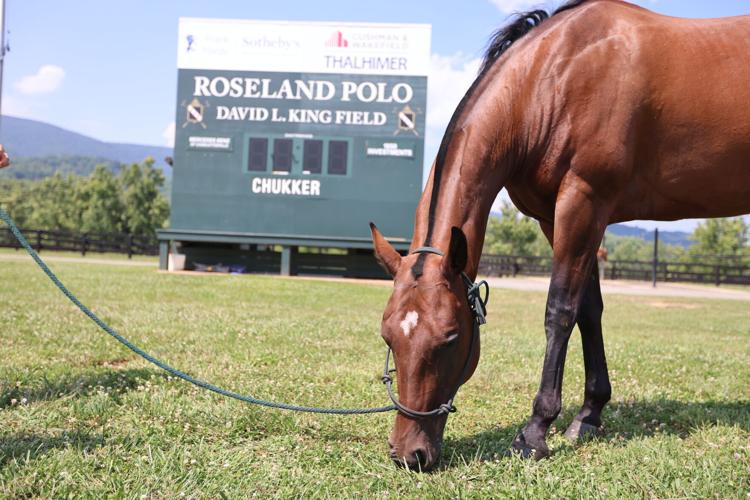Hunter Thompson is the creator of the Gonzo journalism movement. Join me on a tour of Thompson’s first foray into the art, in June 1970.
Gonzo journalism places the reporter at the center of the story in a highly personal and oftentimes satirical way, according to Britannica.
In 1970, Thompson was dispatched to write a 250-word piece about the Kentucky Derby with cartoon artist Ralph Steadman. He returned with a 15-page descent into the depravity he saw a over several sunny Kentucky days.
The article, “The Kentucky Derby is Decadent and Depraved,” pierces deep into the heart of American moral corruption seen through Thompson’s eyes.
The work most analogous to the article’s nature is Dante’s “The Divine Comedy”; where Dante is led through Hell by Virgil and shown all the horrors therein. In the article, Thompson plays Virgil to Ralph Steadman, a naive Englishman who has never been to America before.
The article starts with Thompson looking feverishly for Steadman, which proves difficult as he does not know what Steadman looks like. These first pages are the calm before the storm as Thompson is not inebriated and retains a degree of personal dignity.
Once Thompson finds Steadman they make their way to day one of the Derby. Throughout day one, Thompson, a Kentucky native, describes the different kinds of excess they will see. In a vain effort to dissuade Steadman’s concerns, Thompson says Steadman should “pretend you’re visiting a huge outdoor loony bin”. This sets the tone for the entire experience.
Immediately upon entering the Derby, both Thompson and Steadman get swept into the insanity. Thompson observes people “fainting, crying, copulating, trampling each other and fighting with broken whiskey bottles.” Through liberal consumption of alcohol, Thompson and Steadman begin their true mission, watching “the real beasts perform”. While in the press box, Thompson describes the “whiskey gentry” who come out for derby day. He says the people are a “pretentious mix of booze, failed dreams, and a terminal identity crisis”. His descriptions of the masses in the infield are not much kinder. Thus ends Derby day one, a day of guiding Steadman through this new and grotesque environment with limited problems on Thompson’s part.
As days two and three dawn, Thompson’s writing becomes less coherent. He admits that “My notes and recollections from Derby Day are somewhat scrambled”. The remainder of the article (about five pages) is a loosely connected series of situations and observations that Thompson experiences, most notably his journey into the infield which causes Steadman to nearly collapse from shock. This is the height of depravity in the article. Any actual objective reporting is long gone, and the article has become a raw account of the debauchery Thompson observes at the Derby. Thompson’s people-watching produces scenes of unrest and drunken battles mixed in with topical comments about Black Panther threats and soldiers guarding American flags. While Thompson’s reporting is engrossed in the Derby, small parts of the larger social and political unrest of the time leak out. Thompson mentions what will soon become the Kent State massacre and Nixon bombing Cambodia. These anecdotes mixed with the mint-flavored hedonism make for an article that is as entertaining as it is horrific.
When Thompson and Steadman return from the Derby they make a harrowing realization. They were sent to the Derby to observe the debauchery, and almost without thinking, they became a part of it. Thompson says “I thought that Ralph [Steadman] had brought somebody with him–a model for that one special face we’d been looking for. There he was by God–a puffy, drink-ravaged, disease-ridden caricature… it [the face] was, of course, my own.”
This is the key moment of the article. All of their revelry led to this moment of drunken realization. Thompson and Steadman became the very people they came to observe and satirize. They were part of the alcoholism and violence that they were meant to malign.
The style of “The Kentucky Derby is Decadent and Depraved” which went on to define the gonzo genre, shows in an unfiltered way, the real and horrid world we exist in. The value in Thompson’s observations comes from his direct participation in the horrors, and not just his reporting on them. Further value comes from how Thompson describes and critiques the culture of the Derby. Thompson says that the grotesque faces he saw all around him constantly drinking, vomiting, and smoking all come from “a closed and ignorant culture”. Reading his account of this excess is jarring. It shows a culture that claims to be superior while spilling whiskey on its suit and vomiting on its shoes. This forces the reader to confront the things that civilized society looks away from in all its prurient details. No other type of reporting can properly communicate the atmosphere of such an event like Thompson’s gonzo style.
While Thompson’s account is not representative of all of America, or even all of the Derby, it paints a picture of unbridled freedom and consumption that is far from what could be considered proper human behavior. The reader becomes enthralled with Thompson’s writing and in some ways roots for his descent into indulgence in order to live vicariously through him. As the Derby ends and the moments of reflection begin, the reader is forced to reflect and consider that they, along with Thompson, were pulled into the culture of decadence and depravity.
At its core, the article is a critique of American consumption culture and the unpleasant vile underbelly of society. Thompson notes that many of the people drinking themselves silly before noon are the same people who hold important positions in the government and “high society” who preach temperance and discipline; and yet, they are caught up in the depravity present in their culture regardless of their feelings.
“The Kentucky Derby is Decadent and Depraved” reflects the American culture of consumption and revelry through the same unseemly lens that it occurs in. Much like Dante’s journey through Hell, the only way to escape is to go deeper.









